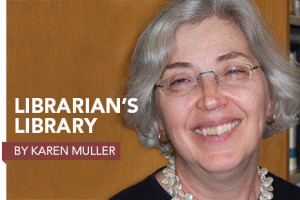
I recently attended a meeting of community-based organizations that provide college preparedness support to youth and families. It wasn’t a new group, but it was the first time I went to one of their meetings. During the two or so hours, I hardly spoke. That didn’t mean I wasn’t engaged or informed about the topics discussed; that wasn’t the case at all. But I went into the meeting room thinking, “I really need to hear what people are saying in order to figure out what the library’s role should be in this area.”
Listening and not speaking up are often hard for me. I think they’re hard for many library staffers. Those working in libraries are often so focused on telling others about all the great stuff we have to offer youth and families—databases, homework help, free books, downloadable music, etc.—that we don’t always make sure we understand what a particular group’s specific needs are.
Listening is really the essential first step in creating great programs and services for youth and families. It’s the way to make sure that the library is responsive to community needs and not working solely from personal, professional, or generalized hunches about those needs.
At that college preparedness meeting, I had some prior perceptions validated; but I also realized there were needs I hadn’t previously been aware of. By listening, instead of speaking up, here’s what I learned:
- Many community-based organizations are focused on working with middle school youth and families. That means that while college application, scholarship, and SAT prep workshops may be helpful, libraries need to play a new role in supporting tweens and younger teens and their families to understand the value of learning about and taking advantage of college pathways.
- I found out how data is being collected and used by college readiness programs. These programs, for example, are not just looking at whether or not teens and their families complete the Free Application for Federal Student Aid (FAFSA), but they also look at whether families take the final step of submitting it. (Data has to be entered by families at two different times—once in the winter and once in the early spring. It’s not until that final spring data submission that the FAFSA form is actually complete.) By hearing about this I realized that library staffers may need training on how to provide FAFSA support over an expanded timeframe.
- There are a lot of community partners that have the same goal—improving access to college and career pathways for youth and families—as the library. The library needs to be a key player in this work, but we should be careful not to replicate what others are doing. Instead we must focus on filling in as many gaps as we can.
After this lesson in listening, I was able to connect with the convener of the meeting and speak up about the unique ways the library can support the work of the group. As a result, we are collaborating in new ways. For example, the convener asked if he could visit several library branches to learn more about what services are available to youth and families, and to talk with staff members about trends he sees in his work in the college and career readiness arena.
This is only one example of the listening I’ve done recently, and the partnership generated by that listening. Yes, it made me squirm feeling that people might think I wasn’t really interested or informed about the topic discussed. And I know it’s not easy to not let others know how generally awesome the library is. But, go ahead and try listening first. If you do, I think you’ll find that your opportunities for impact and success are stronger and more sustainable than ever before.

